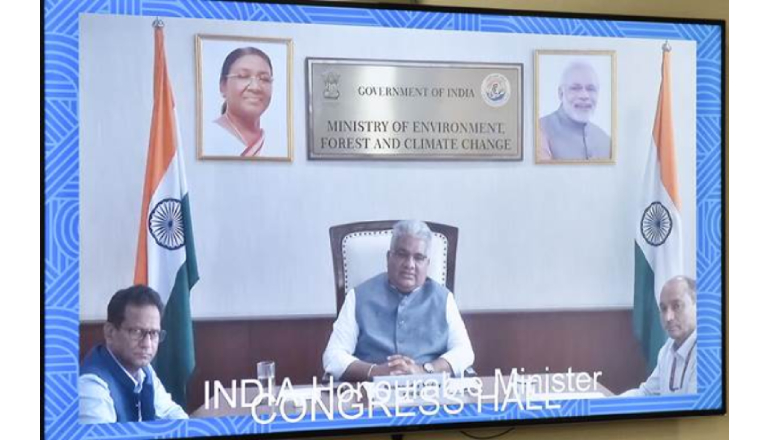Developed countries must fund climate finance initiatives of developing nations said Union Minister of Environment, Forest, and Climate Change, Bhupender Yadav.
The funds will be utilized for implementation of the financial pledges made at the UNFCCC and CBD COPs. He urged the developing countries utilize available carbon space at the same cautioned against viewing climate finance as an investment vehicle.
Mr Yadav was speaking at the 10th BRICS Environment Ministers Meeting, chaired by the Russian Federation. He highlighted the importance of aligning the BRICS initiatives with the UN system’s and its agencies’ principles and goals.
The Union Minister emphasized the need for BRICS countries to enhance cooperation, maintain close multilateral ties, and unite to uphold equity and CBDR-RC values, and adopt sustainable lifestyles.
He highlighted India’s efforts to tackle environmental issues domestically and internationally, and urged the BRICS countries to support India’s global initiatives, including Mission LiFE, IBCA, CDRI, LeadIT, and Ek Ped Maa Ke Naam campaign.
It was the first meeting after the five new members, i.e. Egypt, Ethiopia, Iran, the United Arab Emirates, and Saudi Arabia, joined.

